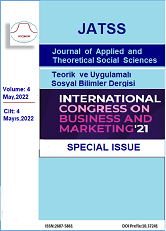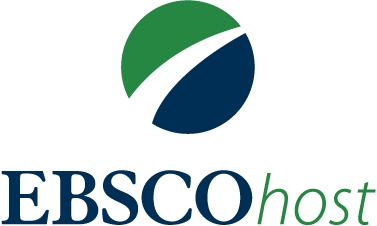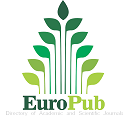Yeşil Pazarlamanın Yeşil Tüketim Üzerindeki Etkileri Üzerine Bir Araştırma
Özet
Yeşil pazarlama, son zamanlarda giderek daha fazla dikkat çeken ve tüketicileri satın alma kararları açısından etkileyen bir kavramdır. Tüketiciler gün geçtikçe ürün ve hizmetlerin çevre dostu olmasına öncelik vermeye başlamışlardır. Böylece, pazar bölümlendirmeleri çevresel kaygıları da içerecek şekilde genişlemeye başlamıştır. Literatürde yeşil satın alma niyeti (YSN) ve yeşil satın alma davranışının yanı sıra yeşil pazarlama ile ilgili bir dizi çalışma bulunmaktadır. Mevcut araştırma çalışmalarının çoğu, aynı ülke içindeki demografik değişkenler ve özellikle çevresel satın alma davranışının değerlendirilmesi ile ilgili olarak hedef pazar bölümlendirmesiyle ilgilidir. Öte yandan, literatürde yeşil tüketici kavramını uluslararası bir bakış açısıyla inceleyen sınırlı sayıda çalışma bulunmaktadır. Bu amaçla, bu çalışma uluslararası tüketicilerin yeşil öz kimlik düzeylerinin (ÇD) ilişkisini analiz etmektedir. Bu çalışmada, uluslararası katılımcılar lisansüstü düzeydedir. Aynı eğitim düzeyine sahip tüketicilerin kendilerini yeşil olarak tanımlamalarının, yeşil ürün farkındalığı (YÜF), yeşil ürün satın alma niyetleri(YSN) ve fiyat duyarlılıkları (FD) ile nasıl ilişkili olduğunun değerlendirilmesi amaçlanmaktadır. Anket yönetimiyle 119 kişiden veri toplanmıştır. Toplanan veriler SPSS 23 yardımıyla Korelasyon Analizi, Lojistik Regresyon Analizi Ki Kare Testi, Normallik Testi, Bağımsız t-testi, ANOVA ve frekans, ortalama ve çapraz tablolama ile analiz edilmiştir. Bulgular, kendilerini çevre dostu olarak tanımlayan katılımcıların, YÜF'ü ve YSN’nin birbiri üzerinde önemli bir etkisi olduğu eğilimine ek olarak, yeşil ürünlerden daha fazla haberdar olma eğiliminde olduklarını göstermiştir. Ayrıca, çalışma, ülkenin çevre dostu olma eğilimini önemli ölçüde etkilediği sonucuna varmıştır. Bu çalışmanın, uluslararası yeşil tüketiciliğe odaklanmak isteyen bu alandaki araştırmacılar ve uygulayıcılar için faydalı olması umulmaktadır.
##plugins.generic.paperbuzz.metrics##
Referanslar
Akenji, L., & Bengtsson, M. (2010). Is the consumer really king? Stakeholder analysis for sustainable consumption and production using the example of the packaging value chain. in: Sustainable consumption and production in the Asia-pacific. Region: Effective Responses in a Resource Constrained World. IGES, 23-46.
Burke, P. F., Eckert, C. & Davis, S. (2014). Segmenting consumers’ reasons for and against ethical consumption. European Journal of Marketing, 48(11/12), 2237-2261. DOI: https://doi.org/10.1108/EJM-06-2013-0294
Chitra, K. (2007). In search of the green consumers: A perceptual study. Journal of Services Research, 7(1), 173-191.
Dangelico, R. M. & Vocalelli, D. (2017). “Green marketing”: An analysis of definitions, strategy steps, and tools through a systematic review of the literature. Journal of Cleaner Production, 165 (1 November 2017), 1263-1279. DOI: https://doi.org/10.1016/j.jclepro.2017.07.184
D’Souza, C. Taghian, M. & Lamb, P. (2006). An empirical study on the influence of environmental labels on consumers. Corporate Communications: An International Journal, 11(2), 162-173. DOI: https://doi.org/10.1108/13563280610661697
George, D., & Mallery, M. (2010). SPSS for Windows step by step: A simple guide and reference, 17.0 update (10a ed.). Boston: Pearson
Ginsberg, J. M. & Bloom, P. N. (2004). Choosing the right green marketing strategy. MIT Sloan Management Review, Fall, 79-84.
Hasan, Z. & Ali, N. A. (2015). The impact of green marketing strategy on the firm’s performance in Malaysia. Procedia-Social and Behavioral Sciences, 172 (27 January 2015), 463-470. DOI: https://doi.org/10.1016/j.sbspro.2015.01.382
Haws, K. L., Winterich, K. P., & Naylor, R. W. (2014). Seeing the world through GREEN- tinted glasses: Green consumption values and responses to environmentally friendly products. Journal of Consumer Psychology, 24(3), 336-354. DOI: https://doi.org/10.1016/j.jcps.2013.11.002
Kumar, P. & Ghodeswar, B. (2015). Green marketing mix: A review of literature and direction for future research. International Journal of Asian Business and Information Management, 6(3), 39-55. DOI: https://doi.org/10.4018/IJABIM.2015070104
Leonidou, C. N. & Leonidou, C. L. (2011). Research into environmental marketing/management: a bibliographic analysis. European Journal of Marketing, 45(1/2), 68-103. DOI: https://doi.org/10.1108/03090561111095603
Maniatis, P. (2016). Investigating factors influencing consumer decision-making while choosing green products. Journal of Cleaner Production, 13 (20 September 2016), 215-228 DOI: https://doi.org/10.1016/j.jclepro.2015.02.067
Modi, A. G. & Patel, J. D. (2013). Classifying consumers based upon their pro-environmental behaviour: an empirical investigation. Asian Academy of Management Journal, 18(2), 85-104.
Ottman, J.A. & Reilly, W. R. (1998). Green marketing: Opportunity for innovation. New York: J. Ottman Consulting Inc.
Peattie, K. (1992). Green marketing, the M&E handbook series. London: Pitman.
Peattie, K. (1999). Trappings versus substance in the greening of marketing planning. Journal of Strategic Marketing, 7(2), 131-148. DOI: https://doi.org/10.1080/096525499346486
Peattie, K., & Charter, M. (2003). Green marketing. In: Baker, M.J. (Ed.), Book Chapter: The Marketing Book. Elsevier, Worldwide.
Poongodi, S. & Gowri, S. (2017). Green marketing and its impact on consumer buying behaviour on green products with special reference to selected districts of Tamilnadu. IOSR Journal of Humanities and Social Science (IOSR-JHSS), 22(11), 78-82.
Popp, B, & Woratschek, H. (2017). Consumers’ relationships with brand communities – The multifaceted roles of identification and satisfaction. Journal of Retailing and Consumer Services, 35 (March 2017), 46-56. DOI: https://doi.org/10.1016/j.jretconser.2016.11.006
Santos D. F. L., Basso, L. F. C., & Kimura, H. (2018). The trajectory of the ability to innovate and the financial performance of the Brazilian industry. Technological Forecasting & Sociall Change,127 (February 2018), 258-270. DOI: https://doi.org/10.1016/j.techfore.2017.09.027
Shamsuddoha, M. (2005). Realization on green marketing in Bangladesh. SSRN Electronic Journal. https://papers.ssrn.com/sol3/papers.cfm?abstract_id=1302277(Accessed: 09.04.2022). DOI: https://doi.org/10.2139/ssrn.1302277
Simão, L. & Lisboa, A. (2017). Green marketing and green brand – The Toyota Case. Procedia Manufacturing, 12, 183-194. DOI: https://doi.org/10.1016/j.promfg.2017.08.023
Solaiman, M., Osman, A. & Halim, M. S. B. A. (2015). Green marketing: A marketing mix point of view. International Journal of Business and Technopreneurship, 5(1), 87-98.
Suki, N. M., Suki, N. M. & Azman, N. S. (2016). Impacts of corporate social responsibility on the links between green marketing awareness and consumer purchase intentions. Procedia Economics and Finance, 37, 262-268. DOI: https://doi.org/10.1016/S2212-5671(16)30123-X
Tekade, A. B. & Saskitar, S. S. (2015). Present green marketing: Importance and challenges in consumer satisfaction. International Journal for Administration in Management, Commerce and Economics, 3, 308-312.
Tseng, S. & Hung, S. (2013). A framework identifying the gaps between consumers’ expectations and their perceptions in green products. Journal of Cleaner Production, 59 (15 November 2013), 174- 184. DOI: https://doi.org/10.1016/j.jclepro.2013.06.050
Tuz, A. & Sertyeşilışık, B. (2021a). Integration of the management theories for enhancing green marketing implementation in the construction industry. A/Z ITU Journal of the Faculty of Architecture, 18(3), 653-671. DOI: https://doi.org/10.5505/itujfa.2021.59354
Tuz, A. & Sertyeşilışık, B. (2021b). Investigating green marketing implementation with the hedonic price model in residential projects: the case of Istanbul. Critical Housing Analysis, 8(1), 85-100. DOI: https://doi.org/10.13060/23362839.2021.8.1.525
Tuz, A. & Sertyeşilışık, B. (2020). Finding and minding the gaps in state-of-the-art lean and green marketing in the construction industry. Market Trziste, 32(2), 187-203. DOI: https://doi.org/10.22598/mt/2020.32.2.187
Yadav, R. & Pathak, G.S. (2013). Green marketing: Initiatives in the Indian context, Indian Journal of Marketing, October, 25-32. DOI: https://doi.org/10.17010/ijom/2013/v43/i10/38358
Zhu, Q. & Sarkis, J. (2016). Green marketing and consumerism as social change in China: Analyzing the literature. Int. J. Production Economics, 181, Part B, November 2016 289-302. DOI: https://doi.org/10.1016/j.ijpe.2016.06.006






















